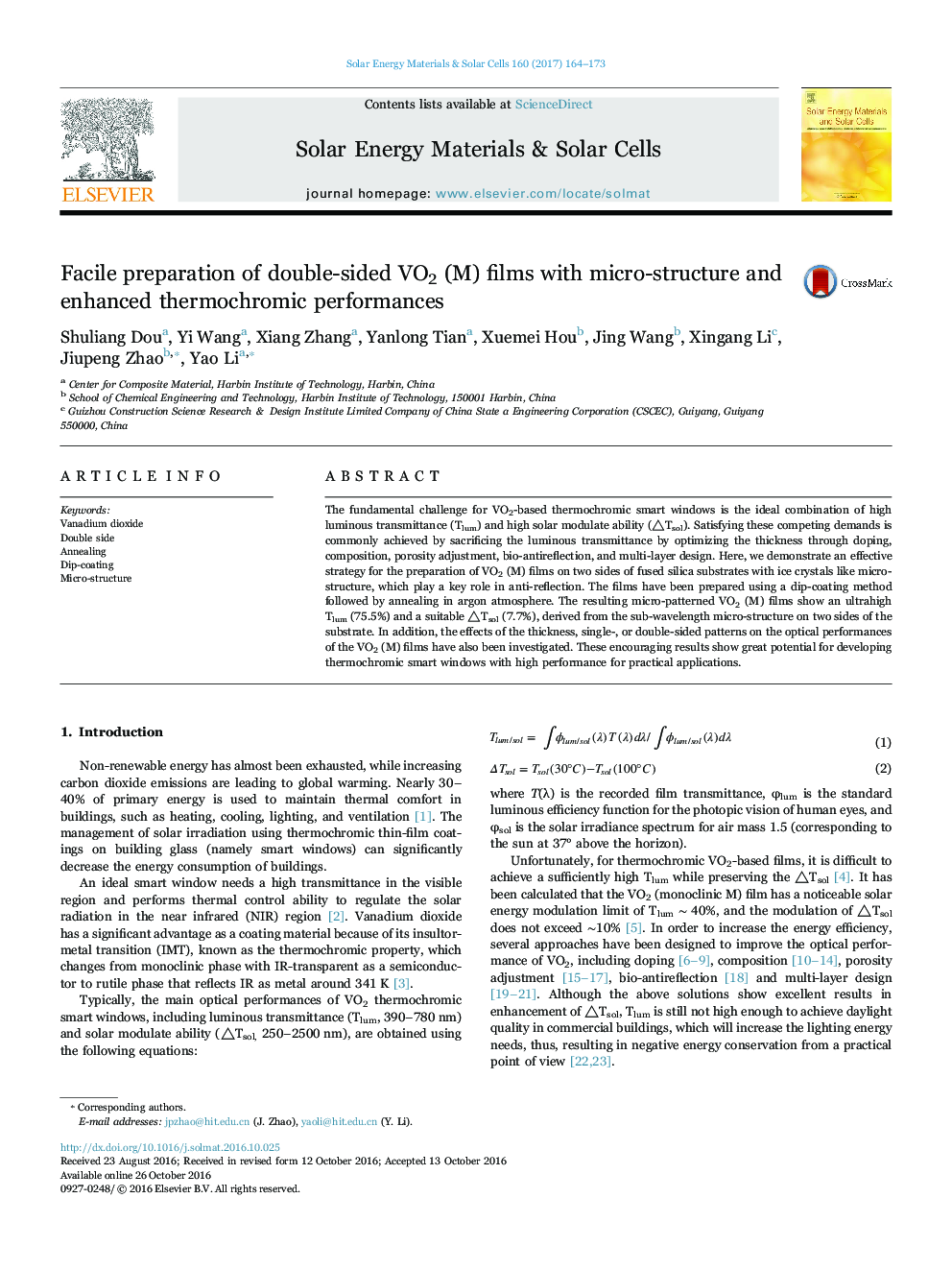| Article ID | Journal | Published Year | Pages | File Type |
|---|---|---|---|---|
| 6457322 | Solar Energy Materials and Solar Cells | 2017 | 10 Pages |
The fundamental challenge for VO2-based thermochromic smart windows is the ideal combination of high luminous transmittance (Tlum) and high solar modulate ability (â³Tsol). Satisfying these competing demands is commonly achieved by sacrificing the luminous transmittance by optimizing the thickness through doping, composition, porosity adjustment, bio-antireflection, and multi-layer design. Here, we demonstrate an effective strategy for the preparation of VO2 (M) films on two sides of fused silica substrates with ice crystals like micro-structure, which play a key role in anti-reflection. The films have been prepared using a dip-coating method followed by annealing in argon atmosphere. The resulting micro-patterned VO2 (M) films show an ultrahigh Tlum (75.5%) and a suitable â³Tsol (7.7%), derived from the sub-wavelength micro-structure on two sides of the substrate. In addition, the effects of the thickness, single-, or double-sided patterns on the optical performances of the VO2 (M) films have also been investigated. These encouraging results show great potential for developing thermochromic smart windows with high performance for practical applications.
Graphical abstractDownload high-res image (385KB)Download full-size imageThe surface microstructure of films annealed at 500 °C with a. 1 h, b. 5 h, c. 10 h; d. XRD patterns of samples prepared at 500 °C with 1 h (blue line), 5 h (red line) and 10 h (black line); and e. the transmittance spectra of the VO2 films on both sides and one side of the substrates collected at RT (solid line) and 100 °C (dashed line)
